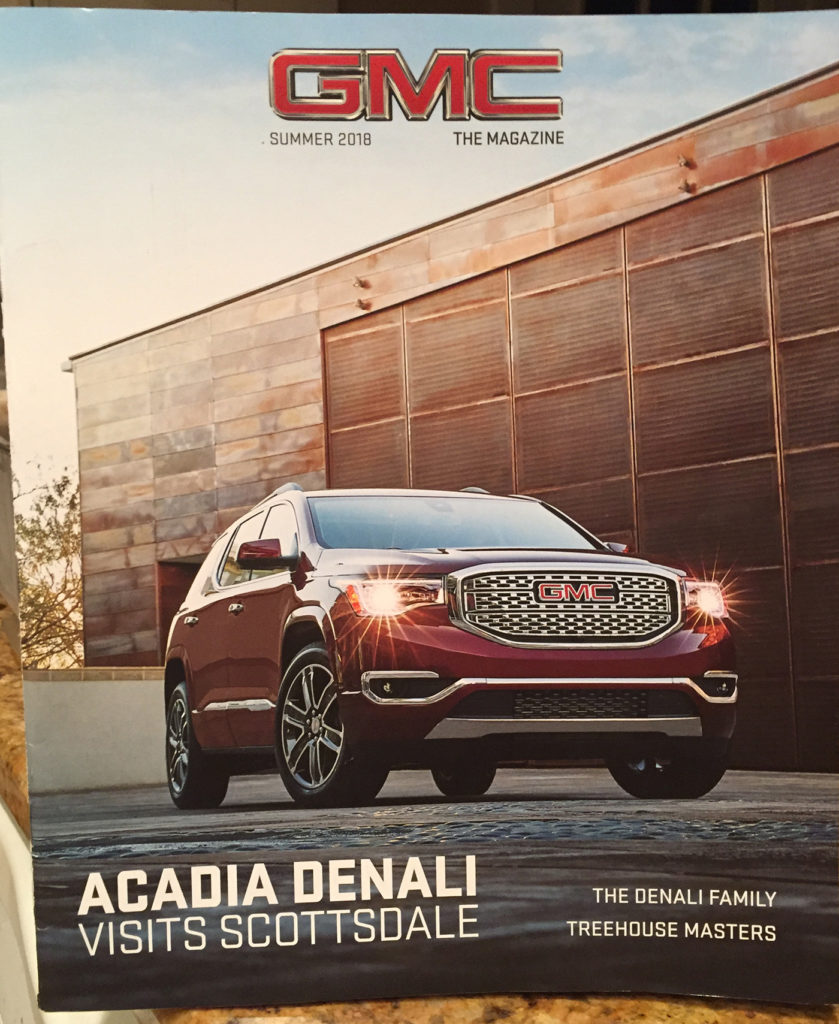I bought a GMC sport-utility vehicle last year, and just about two weeks ago, I got the Summer 2018 edition of GMC The Magazine.
I wasn’t expecting it, I didn’t even know it existed. But as a recent buyer of a GMC product, I was glad to get it. It was a 34-page magazine printed on oversize trim and high-quality matte stock. More important was the content. It had stories, not sales pitches. Yes, it was mostly about GMC owners, and the things people can do—or are doing—with their GMC vehicles, but it was still a lot better than specifications and marketing fluff.

There was a story about touring Scottsdale, Arizona, (in a GMC). There was a story about a wounded Afghanistan veteran getting into a smart home through GMC’s Tunnel to Towers Foundation. Another story featured the designer-treehouse builder whose show, Treehouse Masters, is featured on Animal Planet. (GMC sponsors the show.) There was a story about a high school band director who uses a GMC Canyon. And as someone who’s always interested in car design (and frankly I prefer the look of the Ford trucks to the GM trucks) there was an especially interesting interview with GMC’s design director, who talked about the look of the upcoming lineup.
Maybe none of this was deep, impactful journalism. But it did what I think it was designed to do: help me bond with the brand of car that I bought, affirm my decision, let me follow the company more closely, make me feel good about my GMC.
GMC the Magazine did something that no sales brochure could have done. It told stories, it invited me to engage, and it strengthened my connection to the three-letter brand: GMC.
That’s what great brand content, custom publishing, content marketing—you pick the name—that’s what it does. Hey, the Acadia’s a good vehicle. But now, I’m much more likely to buy another than I had been.

